Exploring the Fascinating World of the Horn Beak: A Unique Bird Feature
Table of Contents
Introduction
Birds with horn beaks are some of the most fascinating creatures in the animal kingdom. These birds, such as toucans and hornbills, have large, unique beaks that set them apart from other birds. The horn beak is not just a special feature for looks; it plays an important role in helping these birds survive in the wild. From foraging for food to protecting themselves from predators, their horn beaks are incredibly useful tools.
The horn beak is designed to be both strong and lightweight, which allows birds to easily handle a variety of tasks. For example, toucans use their beaks to reach fruit high in the trees, while hornbills use their beaks for nesting and defense. These birds show how nature designs animals with the perfect tools for their lifestyle, and the horn beak is a key part of that.
In this blog post, we will dive deeper into the world of birds with horn beaks. We will explore how these birds use their horn beaks in different ways, from helping them find food to protecting them from danger. By the end, you’ll have a better understanding of how these remarkable birds survive and thrive in their natural habitats.
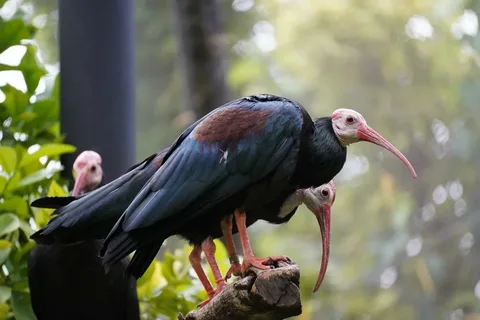
What is a Horn Beak? Understanding this Unique Bird Feature
The horn beak is a unique and fascinating feature found in certain bird species. Unlike the usual straight beak, a horn beak is curved and often looks like a horn. This special shape makes it stand out, and it serves many important purposes for the birds that have it. Horn beaks are typically strong, sharp, and capable of handling tough tasks, such as breaking open seeds, holding onto prey, and even defending the bird from danger.
A horn beak is most commonly seen in birds like hornbills, toucans, and some species of parrots. These birds have beaks that are not just used for eating but also for a variety of other activities that are vital to their survival. The structure of the beak can vary from bird to bird, but it is always adapted to meet the needs of their particular environment. For example, a hornbill’s large, powerful horn beak helps it grab food from high branches and protect itself from predators.
The horn beak is also incredibly useful when it comes to feeding habits. Many birds with horn beaks can eat foods that other birds might struggle with. They can crack tough nuts and seeds or catch and hold onto small animals. This ability to feed on a variety of foods makes birds with horn beaks highly adaptable to different environments, from dense forests to open savannas. Their strong beaks give them an advantage in places where food might not be easy to find.
Besides feeding, the horn beak plays a role in communication and social behavior. Birds like hornbills use their beaks for loud calls to mark their territory or to attract mates. The beak may also be used in displays of strength or dominance within their groups. This makes the horn beak an essential tool, not only for survival but for the social structure of the species.
In summary, the horn beak is an extraordinary feature that allows certain birds to thrive in their environments. Its strength, versatility, and usefulness for feeding, defense, and communication make it a crucial part of the bird’s survival toolkit. Whether used for cracking open seeds or sending a warning call to other birds, the horn beak is a key part of what makes these birds so special.
How Does the Horn Beak Help Birds Survive in Nature?
The horn beak is a crucial tool that helps birds survive in their natural habitats. One of its main functions is to assist with feeding. Birds with horn beaks are often able to access food that other birds cannot. For example, their strong, curved beaks can easily crack open hard seeds, nuts, or even tough shells. This gives them access to a wider range of food options, which is especially important in environments where food may be scarce or hard to find.
In addition to feeding, the horn beak helps birds with foraging and hunting. Birds like hornbills and toucans use their beaks to reach high branches and grab fruit or insects. Their long, strong beaks allow them to reach places that would otherwise be difficult to access, such as the deep parts of trees or dense foliage. This ability helps them gather food that is not readily available to other animals, giving them an edge in their environments.
Another key way the horn beak helps birds survive is by providing them with defense and protection. The beak serves as a tool for defending the bird from predators or rival animals. For instance, a hornbill can use its beak to peck at an approaching predator or chase off threats. Some birds may even use their horn beaks to fight other animals over territory or mates. This self-defense mechanism is an important survival trait, allowing the bird to protect itself and its nest from danger.
The horn beak also plays a role in the bird’s social behaviors. Many birds use their beaks for communication, whether to signal to others or to establish dominance. Hornbills, for example, make loud calls and use their beaks to send messages to other birds. During the mating season, the male might use his horn beak to perform displays that attract a mate. These behaviors help birds find partners and maintain their position within their social groups.
Overall, the horn beak is an essential part of a bird’s ability to thrive in the wild. Its strength and versatility make it a valuable tool for feeding, defending, and communicating. Birds with horn beaks are better equipped to survive in harsh environments, and their unique beaks help them adapt to a variety of challenges in nature.
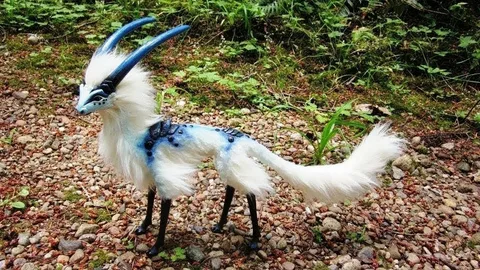
The Different Types of Birds with a Horn Beak
There are several fascinating birds that feature a horn beak, each species using this unique beak in its own way to survive and thrive. One of the most well-known birds with a horn beak is the Hornbill. Hornbills are large, colorful birds found mostly in tropical forests across Africa and Asia. Their horn-shaped beaks are not only strong but also often quite large, giving them a distinctive appearance. Hornbills use their beaks to gather food, such as fruit and small animals, and they even use them to defend themselves from predators.
Another bird with a horn beak is the Toucan. Toucans are easily recognized by their large, curved beaks that are almost as long as their bodies. Native to Central and South America, toucans use their horn beaks to reach fruit and berries high in the trees, as well as for catching insects. Despite their size, toucan beaks are surprisingly light because of their unique structure, which is designed to help them balance and maneuver through the dense canopies of the rainforest.
The Parrot family is another group of birds that sometimes has horn-like beaks. While not all parrots have the same size or shape as the hornbill or toucan, many species possess strong, curved beaks that are capable of cracking nuts, seeds, and even tearing into tough plant materials. Parrots are known for their intelligence and social behaviors, and their horn-like beaks help them in both feeding and communication. Some species of parrots, like the Kea from New Zealand, use their powerful beaks for foraging in the harsh, mountainous regions.
Lastly, The Crested Auklet, a seabird found in the North Pacific, also displays a type of horn beak. While their beaks are not as exaggerated as those of hornbills or toucans, they still feature a small, sharp upward curve at the tip. This curve helps the auklets catch and hold onto their prey in the rough ocean waters. Though not as famous as other horn-beaked birds, these seabirds still rely on their unique beaks to survive in their aquatic environment.
Each of these birds uses their horn beaks for different purposes—whether it’s for feeding, hunting, or protecting themselves. The diversity in size, shape, and function of these beaks demonstrates how adaptable birds can be to their environments. Despite their differences, these birds all share the important trait of having a horn beak, which is central to their survival.
How to Identify a Bird with a Horn Beak
Identifying a bird with a horn beak is relatively simple once you know what to look for. The most obvious feature is the shape and size of the beak. A horn beak is typically curved, with a strong, pointed tip that resembles the shape of a horn. It can be large and bulky, like the beak of a hornbill, or smaller and more delicate, like that of a parrot. The beak may appear oversized in proportion to the bird’s body, which is common in species like toucans. These birds often have beaks that are brightly colored, making them easy to spot in their natural habitats.
Another way to identify a bird with a horn beak is by looking at the bird’s size and body structure. Birds like hornbills and toucans are large, with strong bodies designed to support their heavy beaks. Hornbills, in particular, have a large, rounded body and a distinctive “casque” (a helmet-like structure on top of the beak) that further sets them apart. Toucans, on the other hand, have a more slender body but a long, curved beak that almost looks out of place. Birds with horn beaks are usually forest dwellers, so their colorful and large beaks help them navigate dense foliage and catch food.
Color patterns are also a key feature when identifying these birds. Many horn-beaked birds, like toucans, have vibrant plumage with bright colors like yellow, red, and green. This helps them blend into the tropical forests where they live, making it easier for them to hide from predators while still using their colorful beaks to attract mates or communicate. Hornbills, which are often found in Africa and Asia, also have vibrant plumage, though their beaks are generally less colorful than those of toucans. Instead, hornbills often have large, pale-colored beaks with a pronounced casque on top.
The bird’s behavior can also be a clue in identifying horn-beaked species. Many birds with horn beaks are known for their social behavior, often living in groups. Hornbills, for example, are often seen in pairs or small family groups. Toucans, too, are social birds and can be seen hopping around trees, calling out to one another. Parrots with horn-like beaks are also known for their playful and intelligent behavior. They often interact with each other and their surroundings, using their beaks to hold objects or crack open tough food.
In summary, identifying a bird with a horn beak involves observing its beak shape, size, and color. The bird’s overall body structure and behavior are also helpful clues. Whether it’s the large, curved beak of a toucan or the strong, thick beak of a hornbill, these birds all share the distinctive feature of a horn-like beak that plays a crucial role in their survival.
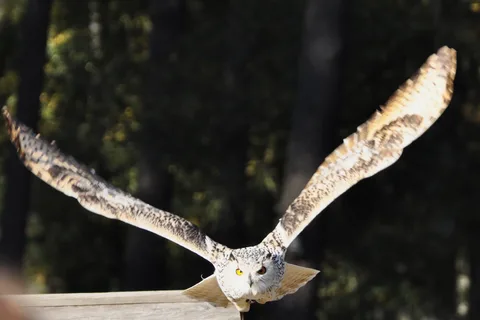
The Role of the Horn Beak in Bird Feeding Habits
The horn beak plays a vital role in the feeding habits of birds, allowing them to access a wide range of food sources. One of the most important features of a horn beak is its strength and shape, which enables birds to crack open tough food like seeds, nuts, and fruit. For example, toucans, with their large, curved beaks, can easily break open hard fruit and seeds that other birds may find difficult to access. The size and strength of their horn beak allow them to consume foods that are rich in nutrients, giving them an advantage in their environment.
In addition to cracking seeds and nuts, the horn beak also helps birds catch and hold onto prey. Birds like hornbills use their horn beaks to snatch up small animals such as insects, lizards, and even small birds. Their beaks are designed to hold and manipulate their food, making it easier for them to feed. The long, sharp tip of the beak acts like a tool for grabbing and securing prey, helping these birds survive in environments where hunting is necessary for their diet.
Another significant role the horn beak plays in feeding is its ability to help birds forage in difficult-to-reach places. Many birds with horn beaks, like toucans, are excellent at reaching high branches or hidden areas in trees. Their long, powerful beaks can extend into dense foliage to find fruit or insects that other animals might miss. This ability to access food in hard-to-reach spots ensures that birds with horn beaks have a wider variety of food options, making them highly adaptable to different environments.
The horn beak also assists birds in processing their food. For example, many horn-beaked birds use their beaks to peel or strip away tough skins from fruit or plants. This is particularly useful for birds that rely on plant-based diets. The sharpness and flexibility of the beak help them manipulate their food into smaller, more manageable pieces, allowing them to eat more efficiently and extract the nutrients they need to survive.
Overall, the horn beak is an essential tool for feeding in birds. Whether it’s cracking open hard seeds, catching prey, foraging in difficult places, or processing food, the horn beak makes it possible for these birds to thrive. Its design is perfectly suited to the unique feeding needs of birds like hornbills, toucans, and parrots, making it a key feature for their survival in nature.
Why Birds with Horn Beaks are Great Adaptations to Their Habitats
Birds with horn beaks have evolved some incredible adaptations that help them survive and thrive in their specific habitats. One of the primary reasons these birds are so well adapted is their ability to access a wide variety of food sources. The strength and shape of the horn beak allow them to break open hard seeds, nuts, and even tough fruits that are difficult for other animals to consume. This gives them a significant advantage in areas where food might be scarce or hard to find, allowing them to survive in environments where other birds struggle to get enough nutrition.
The horn beak is also an excellent tool for birds to reach food that is out of their immediate grasp. Birds like toucans and hornbills use their long, curved beaks to reach high branches, dense foliage, or areas where food is hidden. This unique beak design allows them to gather food from places that are hard for other animals to access. As a result, birds with horn beaks can survive in crowded habitats like tropical forests, where food competition is fierce and where many other birds cannot reach certain food sources.
Another important adaptation is how birds with horn beaks use their beaks for self-defense. In their natural environments, these birds face numerous threats, from predators to rival animals. The horn beak helps them defend themselves by acting as a weapon. For example, hornbills use their strong beaks to fend off predators or even other hornbills that might threaten their territory. Their beaks are sharp and durable, making them effective for both protecting their nests and establishing dominance over other birds.
Furthermore, birds with horn beaks have evolved unique behaviors that help them navigate their habitats. Many of these birds are highly social and use their beaks in communication, whether it’s for courtship displays or warning others of danger. The horn beak plays a role in attracting mates, as seen in species like the toucan, where males use their colorful, oversized beaks to impress females. Their horn beaks are also used in vocalizations and calls, helping these birds maintain social bonds and stay connected with others in their group.
In conclusion, birds with horn beaks are great adaptations to their habitats because their beaks give them numerous advantages in feeding, defense, and social interactions. Their ability to access hard-to-reach food sources, protect themselves from predators, and communicate effectively with their group makes them highly adaptable. These birds are perfectly designed for survival in the diverse and challenging environments they inhabit, from tropical rainforests to mountain ranges.
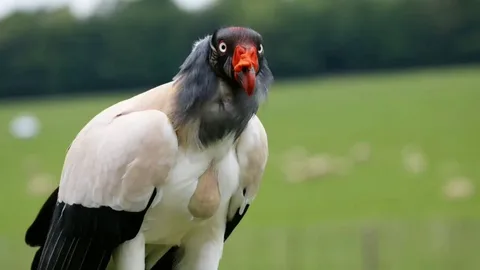
The Evolution of the Horn Beak in Birds
The evolution of the horn beak in birds is a fascinating journey that showcases how animals adapt to their environments over time. Horn beaks likely developed as a response to the specific needs of different bird species. Over millions of years, birds with horn-like beaks found it easier to obtain food, defend themselves, and survive in their environments. This adaptation allowed them to exploit food sources that other birds could not reach or consume. For example, the large, curved beaks of toucans and hornbills enabled them to access hard fruits and seeds that were unavailable to birds with smaller, weaker beaks.
One key aspect of the evolution of the horn beak is the way it helped birds with foraging. Early ancestors of horn-beaked birds likely had smaller, simpler beaks. However, as these birds adapted to forested environments or regions with tough food sources, they needed stronger, more specialized beaks. Over time, their beaks grew larger and more curved, becoming more suited for cracking open seeds and nuts or reaching high branches for fruit. This change allowed them to take advantage of food that was otherwise out of reach for other species, giving them a survival edge in competitive ecosystems.
The horn beak also evolved to assist birds with defense and social behavior. Many species with horn beaks are highly territorial and social. As such, their beaks likely became more robust over time to help them defend their territories and compete with other birds. In the case of hornbills, their large, strong beaks help them ward off potential predators or rival birds, while also playing a role in courtship rituals. This dual purpose—both for feeding and defense—helped drive the evolution of horn beaks in birds, as it provided an advantage in both reproduction and survival.
As these birds evolved, the structure of the horn beak became more specialized. For example, some species like the toucan have evolved beaks that are not only large and curved but also lightweight. This unique design allows the toucan to carry around a large beak without it being too heavy for flight. The specific features of the horn beak, like its shape and size, are also tied to the bird’s habitat and behavior. Birds in tropical forests, for example, may have evolved larger, more colorful beaks to help with mating displays or to stand out in dense environments.
In conclusion, the evolution of the horn beak in birds is a result of the need for specialized tools that help birds thrive in their unique environments. Whether for foraging, defense, or social interactions, the horn beak is a product of millions of years of adaptation. It has helped these birds survive in competitive habitats, feeding on hard-to-reach food, protecting themselves from predators, and establishing social hierarchies, ensuring their survival and reproduction across generations.
How Does a Horn Beak Affect Bird Behavior?
A horn beak significantly influences bird behavior in various ways, from feeding habits to social interactions. One of the primary ways the horn beak affects behavior is in how birds forage for food. Birds with horn beaks, such as toucans and hornbills, use their large, strong beaks to gather food from high branches or dense vegetation. Their beaks allow them to manipulate food in ways that other birds can’t, such as cracking open seeds or nuts. This specialized feeding behavior means these birds are often seen engaging in repetitive actions, like cracking open food, which helps them survive in habitats where food might be hard to find or difficult to access.
In addition to foraging, the horn beak also affects a bird’s territorial behavior. Many birds with horn beaks, such as hornbills, are highly territorial and use their beaks in defending their space. They might use their beaks to establish dominance over other birds, often engaging in loud calls or physical displays. The strength of the horn beak helps them fend off intruders or competitors that may try to take over their territory. In this way, their behavior is closely tied to the need to protect their food sources and nesting sites from other animals.
Social behaviors in birds with horn beaks are also strongly influenced by the size and shape of their beaks. Toucans, for example, use their large, colorful beaks to communicate and interact with others in their group. They may use their beaks in courtship rituals, where males impress females with their bright, oversized beaks. These social behaviors are not just about attracting mates, but also about establishing bonds with other members of their group. Birds with horn beaks often engage in cooperative behaviors, such as feeding in groups or sharing resources, which further strengthen their social connections.
The horn beak also impacts how these birds interact with their environment. Birds with horn beaks are highly adapted to living in dense forests or jungle environments, where they need to use their beaks to maneuver through thick foliage. Their behavior includes navigating their environment in search of food, shelter, and mates. The beak’s design allows them to make precise movements, such as reaching into trees to access hidden fruits or insects, while their large beaks are often used to help break through tough plant material. This behavioral flexibility is crucial for surviving in complex ecosystems.
In conclusion, the horn beak significantly affects a bird’s behavior by influencing how it feeds, interacts with its environment, and communicates with others. Whether for defending territory, foraging for food, or socializing with peers, the horn beak serves as an essential tool in the bird’s daily life. Its impact on bird behavior is seen in the way these birds navigate their world, establish social bonds, and maintain their survival in competitive habitats.
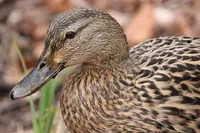
The Horn Beak and Bird Communication: What You Should Know
The horn beak plays a significant role in how birds communicate with each other, influencing both social and reproductive behaviors. For many bird species with horn beaks, such as toucans and hornbills, their beaks serve as tools for visual and vocal communication. The size, shape, and color of the beak can send signals to other birds, whether it’s about attracting a mate or defending territory. For example, the toucan’s large, colorful beak is often used in courtship displays, where the male will present his beak to the female in an effort to impress her. This visual display helps to establish the bird’s health, strength, and genetic fitness, all of which are important factors for successful mating.
In addition to visual communication, the horn beak also plays a role in vocalizations. Birds with horn beaks often use their beaks to produce sounds, which helps them communicate with their flock or warn of danger. Hornbills, for example, are known for their loud, distinctive calls that echo through the forest. The structure of their horn beak helps amplify their calls, allowing them to communicate over long distances, which is crucial for maintaining social bonds or alerting others to threats from predators. The beak acts as an instrument to help produce louder, more resonant sounds.
Birds with horn beaks also use their beaks to establish dominance and territorial boundaries. In the wild, hornbills and toucans often engage in physical displays of power using their beaks, such as swinging or tapping them against tree trunks or branches. These actions communicate strength and territorial claims to other birds in the area. The horn beak acts as a symbol of the bird’s ability to protect its space and resources, and other birds can recognize these signals as signs of ownership or a warning to stay away.
Moreover, the horn beak influences how birds interact with each other during social activities. In species like the toucan, members of the flock often use their beaks to interact socially, such as grooming or feeding each other. This behavior, called allopreening, helps maintain group cohesion and strengthens social bonds. The beak’s size and shape are not only practical tools for feeding but also play a role in these more subtle forms of communication. Birds with horn beaks can convey trust, friendship, and mutual care through these interactions.
In conclusion, the horn beak is an essential tool in bird communication, helping with everything from courtship and territory defense to social bonding. Whether used for visual displays, vocalizations, or physical gestures, the horn beak allows birds to express a variety of messages to each other. Its role in communication is just one of the many ways it supports the survival and social structures of birds in the wild.
Interesting Facts About Birds with Horn Beaks
Birds with horn beaks are fascinating creatures, and they have some truly unique characteristics that set them apart from other species. One of the most interesting facts is that these birds often have brightly colored, oversized beaks that serve more than just a practical purpose. While these beaks are great for foraging and defense, they are also a key part of their social interactions. For example, toucans have large, vibrant beaks that are not just for eating, but also play a role in attracting mates. Their colorful beaks are used in courtship rituals, where males showcase their beaks to impress females, helping them stand out in the dense rainforest.
Another remarkable fact about birds with horn beaks is their ability to adapt to different environments. Toucans, for instance, live in tropical rainforests and use their beaks to help them reach fruits high in the trees that would be difficult to get with smaller beaks. Their beaks are large but surprisingly lightweight, which allows them to carry them around without making flying too hard. This is an excellent adaptation because it enables the toucan to access food in places other birds can’t reach, giving them a survival advantage in their environment.
Birds like hornbills, which also have horn beaks, are known for their fascinating nesting behaviors. When female hornbills are ready to lay eggs, they seal themselves inside hollow trees using a combination of mud and their own droppings, leaving only a small opening through which the male can feed them. This behavior helps protect the female and the eggs from predators. The male hornbill plays a crucial role in communication by using his horn beak to deliver food to the female, showing how essential the beak is in their reproductive behavior.
Additionally, birds with horn beaks have highly developed territorial behaviors. Many species, including the hornbill, are incredibly territorial and will use their horn beaks to defend their space. They may use their beaks to make loud calls that warn off intruders or engage in physical confrontations with other birds. This use of the horn beak for defense and territory protection is vital for ensuring that these birds have access to food and safe places to raise their young.
In conclusion, birds with horn beaks are full of fascinating traits that help them survive and thrive in their environments. From their unique courtship rituals to their ability to adapt to various habitats, these birds showcase the incredible ways nature has designed them to excel. Their colorful, oversized beaks are not only practical but also play significant roles in communication, defense, and social interactions, making them one of nature’s most intriguing creatures.
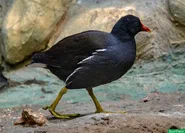
Where to Find Birds with a Horn Beak: A Guide for Birdwatchers
Birdwatching enthusiasts looking to spot birds with horn beaks should focus on regions where these unique birds thrive. Many species with horn beaks, such as toucans and hornbills, are found in tropical and subtropical environments. The best places to start are dense rainforests and lush jungles, where these birds enjoy the abundant food sources that support their specialized diets. For example, toucans are often spotted in the rainforests of Central and South America, from the Amazon Basin to the mountain forests of Costa Rica. Their large, colorful beaks make them easier to spot, especially in the early morning hours when they are most active.
If you’re hoping to see hornbills, these birds are mainly found in Africa, Asia, and parts of Southeast Asia. Some species of hornbills, like the Great Hornbill, live in the tropical forests of India and Southeast Asia, while others can be found in Africa’s savannas and rainforests. The best time to observe hornbills is in the late morning or afternoon, as they are more active during these hours, often flying from one tree to another while searching for fruit or insects. Visiting protected national parks or wildlife reserves in these regions can give birdwatchers a better chance of spotting these amazing birds.
For those based in the United States, while toucans are not native, some species can be spotted in zoos or aviaries that specialize in exotic birds. The Southern United States, particularly Florida, is home to various bird species that resemble toucans, including the Keel-billed Toucan. Although rare, sightings of wild toucans can sometimes occur in regions near the southern border, especially if you’re birdwatching in places like southern Texas, where migrating birds sometimes pass through.
Another place to find birds with horn beaks is in wildlife sanctuaries and bird parks that focus on conserving exotic species. These locations often create environments similar to the natural habitats of these birds, providing ample opportunities for birdwatchers to get close to them. Birdwatchers in these sanctuaries can observe not only the horn beaks of these birds but also their feeding habits, social behaviors, and other fascinating aspects of their life.
In conclusion, finding birds with horn beaks is an exciting adventure for birdwatchers, and it typically involves traveling to tropical or subtropical regions where these birds are most abundant. Whether in rainforests, wildlife reserves, or even local bird parks, there are numerous opportunities to spot these incredible birds. Birdwatching in these regions requires patience and a keen eye, but the reward of seeing these colorful, charismatic birds with their iconic horn beaks is well worth the effort.
Can a Horn Beak Help Birds Protect Themselves from Predators?
A horn beak can indeed help birds protect themselves from predators in several interesting ways. One of the main advantages is that a bird’s horn beak can be a powerful tool for defense. Birds like hornbills and toucans often use their beaks to deliver strong, sharp pecks or jabs when threatened by a predator. This can be especially effective if the bird is defending itself against smaller animals or intruders. The large size and strength of the horn beak allow birds to intimidate or fight back against potential threats, giving them an advantage when it comes to protecting their territory or personal safety.
In addition to being used for physical defense, the horn beak also plays a role in deterring predators through visual signals. Birds like toucans have brightly colored beaks that can serve as a warning to predators, signaling that they are not easy prey. The vivid, large beak may make the bird appear larger or more threatening, which can discourage predators from attacking. Some birds even display their beaks as part of a defensive posture, making themselves look more intimidating and potentially scaring off smaller predators before a physical confrontation even occurs.
Birds with horn beaks often rely on their ability to hide and blend into their environment to stay safe from predators. Their beaks may not only be used for fighting but also for accessing hard-to-reach places in the trees, where they can quickly escape danger. For example, hornbills use their horn beaks to make deep nests in tree cavities, where they can safely hide from predators. Once they are inside, they can seal themselves off with mud and droppings, leaving only a small opening for the male to feed them. This nesting behavior helps protect them and their young from predators that might otherwise find them in the open.
Another way the horn beak helps in protection is through the bird’s ability to make loud vocalizations. Many birds with horn beaks, such as toucans and hornbills, are known for their distinct, often loud calls. These calls can serve as a warning to other birds in the area about the presence of predators. The birds’ horn beaks amplify the sounds, helping the calls travel further. When a predator is nearby, these loud sounds can alert the flock or nearby animals, allowing them to take cover or prepare for defense. This communication can be critical for the survival of the birds and other animals in their habitat.
In conclusion, the horn beak is an important tool for bird defense, providing both offensive and defensive benefits. Whether it’s used to fight off predators, send visual warnings, hide in difficult-to-reach places, or communicate danger to others, the horn beak plays a crucial role in a bird’s survival. Birds with horn beaks are well-equipped to protect themselves from threats in their environment, showcasing the remarkable ways nature has adapted them for safety.
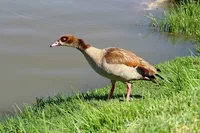
Conclusion
In conclusion, birds with horn beaks are truly amazing creatures. Their unique beaks help them in many ways, from eating food to protecting themselves from predators. Whether it’s using their beaks to defend themselves or to communicate with other birds, they have adapted perfectly to their environment. These birds show us how nature gives animals the tools they need to survive and thrive.
If you ever get a chance to spot a bird with a horn beak, you’ll see just how incredible they are. From their colorful beaks to their clever survival skills, these birds remind us of the wonders of the animal world. So, next time you’re out birdwatching, keep an eye out for these fascinating creatures and the amazing ways they use their horn beaks in the wild!
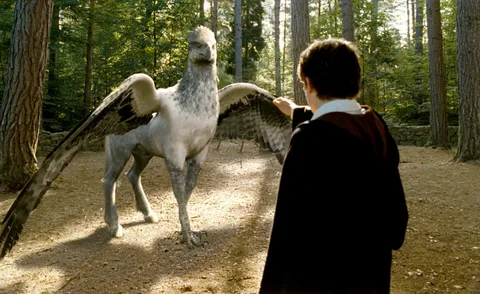
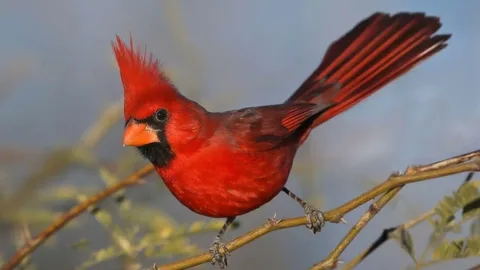

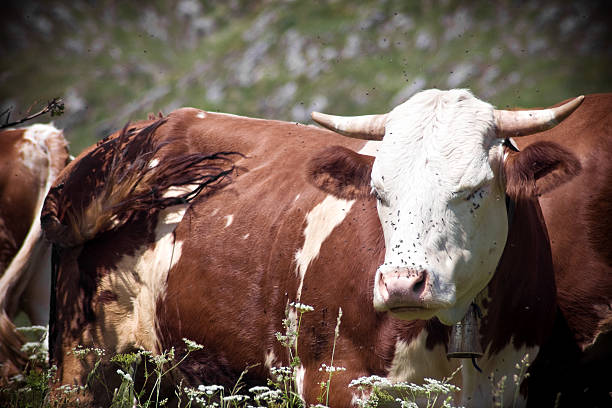










Post Comment